著者グレース・パン
日付:2025年4月6日
マリメッコのことは知らないだろうけど、この柄を見せたらこんな反応が返ってくるかも?- ああ、はい!見たことあります」。
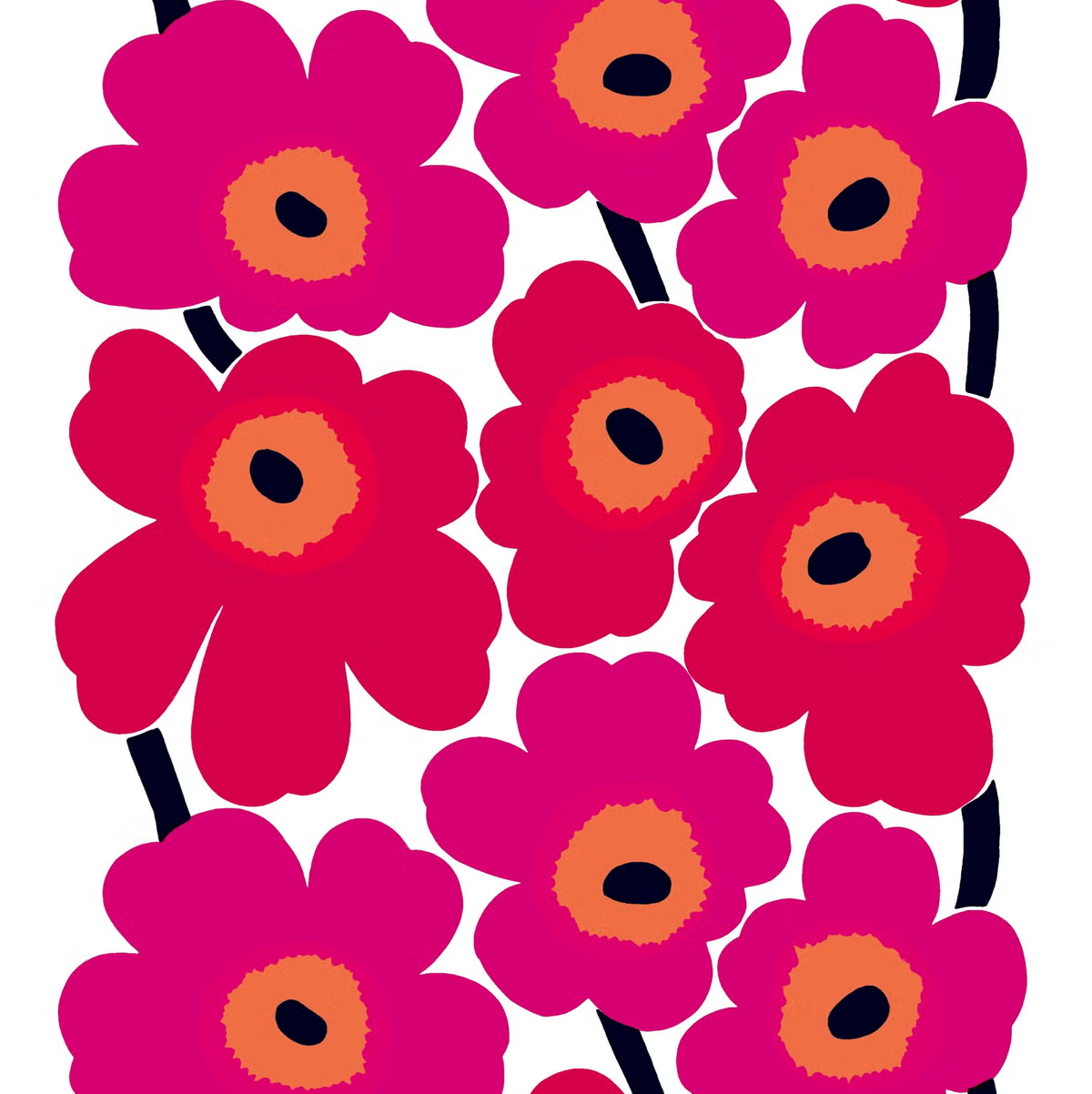
大胆なプリントと鮮やかな色彩で知られるフィンランドのデザインハウス、マリメッコは、単なるファッションやテキスタイルのブランドではない。戦後の楽観主義に深く根ざしたこのブランドが世界的な名声を獲得したのは、先見性のあるリーダーシップ、大胆な芸術的実験、そして創造性の絶え間ない追求の物語である。
1.マリメッコ創業者
マリメッコは1951年、フィンランドのヘルシンキでアーミ・ラティアと夫のヴィルヨ・ラティアによって設立された。アーミ・ラティアは、マリメッコのブランド理念を支えた先見者として広く知られている。詩人であり、クリエイティブな思想家であったアーミは、デザインに対する鋭い眼差しと美学に対する直感を持ち、それが後に会社の中心となった。実業家であるヴィルヨが事業運営を担当する一方、アーミはクリエイティブな方向性に注力し、マリメッコを芸術と機能を融合させたまったく新しい企業として確立した。この2人の相互補完的な強みが、戦後の伝統的なファッションを破壊する運命にあるブランドのバックボーンを形成したのである。
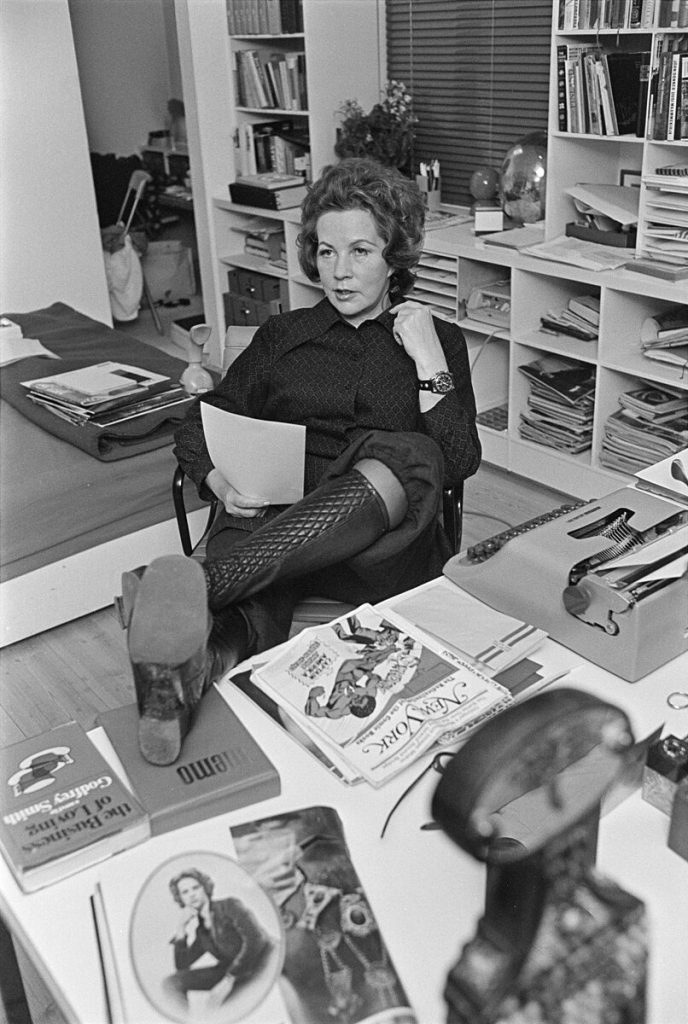
2.ブランドの誕生と転換期
マリメッコの発端は、アルミ・ラティアが以前、同じくヴィルヨが所有するプリンテックスという捺染プリント会社で働いていたことにある。当時の無味乾燥なファブリック・プリントに不満を抱いていたアルミは、フィンランドの若手アーティストを招き、従来のパターンにとらわれない大胆で独創的なデザインを考案させた。日常的な布地にアートを取り入れる」という単純なアイデアから始まったこのプロジェクトは、やがて過激な美の主張へと変化していった。
ブランドの転機は1951年、ヘルシンキのデパートで開催されたファッションショーで訪れた。単にプリント生地を販売するのではなく、大胆なプリント柄が映えるシンプルで自由な流れのドレスという衣服として発表することにしたのだ。イベントは大成功。コレクションはすべてその場で完売した。この瞬間、アルミは単なる生地メーカーではなく、本格的なファッション・ライフスタイル・ブランドとして誕生したのである。
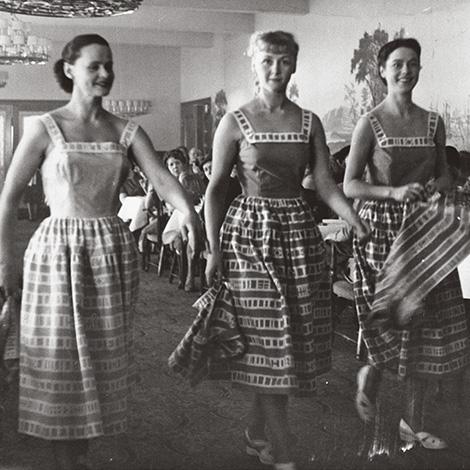
マリメッコの歴史におけるもうひとつの重要な出来事は、1960年のアメリカ大統領選挙キャンペーン中に、当時のアメリカ大統領夫人であったジャクリーン・ケネディがマリメッコのドレスを数着着用しているところを写真に撮られたことである。彼女の支持によってマリメッコは国際的なスポットライトを浴び、モダンで洗練された解放的なファッションのシンボルとしての名声を確固たるものにした。
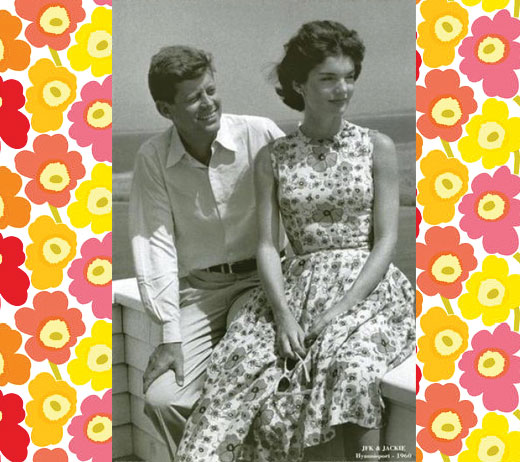
3.発達のマイルストーン
芸術的な連続性と適応的な進化の物語として、数十年にわたるこのブランドの隆盛を追ってみよう。主な発展段階をいくつか挙げてみよう:
1950年代~60年代芸術の黄金時代
アーミの指導の下、マリメッコはマイヤ・イソラ、ヴオッコ・ヌルメスニエミ、アニカ・リマラといった才能あるデザイナーを育てた。彼女たちは単なる版画家ではなく、ジェンダー規範に挑戦し、ファッションを通して自由を謳歌するアーティストだった。彼女たちの作品は、大胆な色使い、抽象的なフォルム、流行よりも個性を優先するアンチファッションの美学など、この会社にユニークなアイデンティティを与えた。
例えば、ヌルメスニエミは1956年にシンプルなストライプの赤と白のヨカポイカのシャツをデザインした。イソラは1964年に象徴的なウニッコ(ケシ)柄をデザインした。
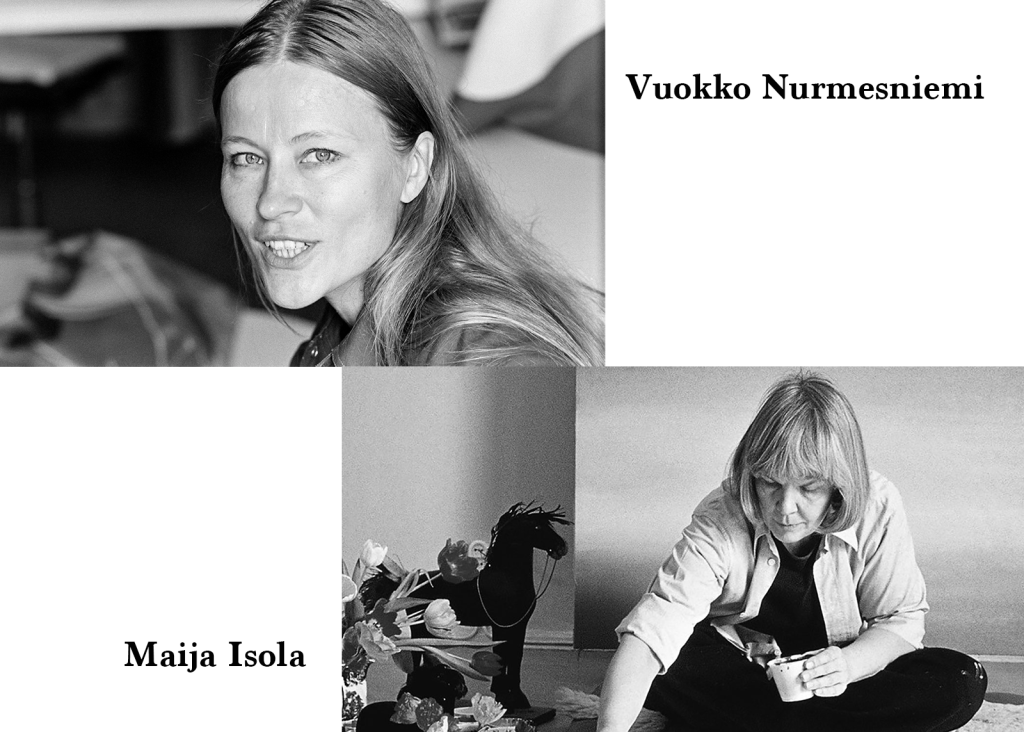
1970s:拡大と挑戦
その人気が世界的に広まるにつれ、同社はホームテキスタイル、アクセサリー、さらには家具にまで事業を拡大した。しかし、1979年のアルミ・ラティアの死後、会社は方向性と収益性に苦しみ、1980年代には困難な局面を迎える。
1990年代~2000年代復活と世界的成長
1991年、フィンランドの企業家キルスティ・パーカネンが経営難に陥っていた同社を買収し、大々的な復活の陣頭指揮を執った。彼女のリーダーシップにより、マリメッコは財務的な安定を取り戻し、新しい世代に向けてイメージを一新した。彼女の指導の下、マリメッコは新たな国際市場に参入し、クレート&バレル、ユニクロ、ターゲットといった世界的小売業者とのコラボレーションを開始した。
2010年代-現在近代化と持続可能性
マリメッコは、デジタルプラットフォーム、持続可能性、デザインコラボレーションを取り入れ、現代のファッションシーンにふさわしい存在であり続けた。クリエイティブ・ディレクターのアンナ・テウネル(2014~2017年)と後のサトゥ・マアラネンは、伝統と革新のバランスを取りながら、ブランドの遺産を築き続けた。
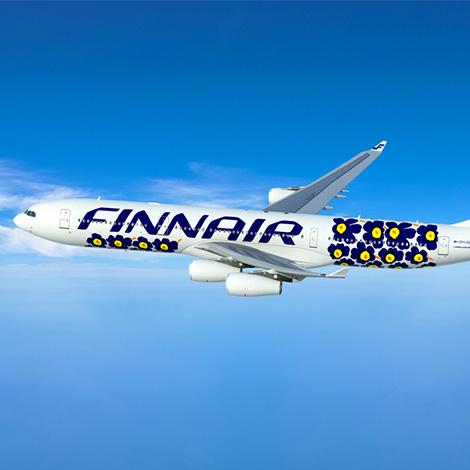
4.アイコニックなデザイン
マリメッコのアイデンティティの中心にあるのは、その独特のプリントと柄の使い方であり、その多くはアイコニックな地位を獲得している:
ウニッコ(ポピー) - 1964年
マイヤ・イソラがデザインしたウニッコは、おそらく最もよく知られたプリントだろう。鮮やかな色合いで抽象的な大きなポピーが描かれたウニッコは、アーミ・ラティアの花柄プリント禁止令に反抗した。イソラの反抗的な創作はとても力強くユニークで、やがてブランドのエンブレムとなった。
ジョカポイカ・シャツ - 1956
ヴオッコ・ヌルメスニエミがデザインしたこのクラシックなストライプシャツは、フィンランドファッションの定番となり、シンプルでユニセックスな魅力を象徴するものとなった。
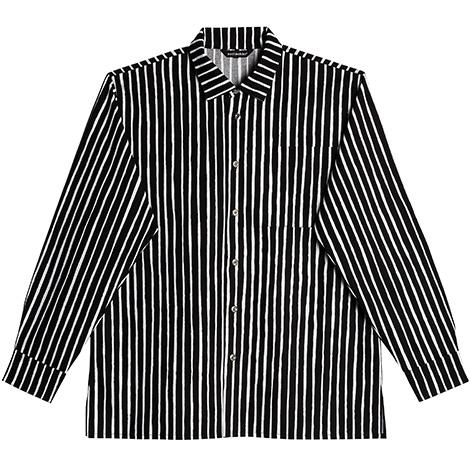
タサライ堂(偶数ストライプ) - 1968年
アニカ・リマラによって制作されたこのプリントは、民主的で時代を超越した魅力で知られるようになった。このプリントは、快適さと自己表現に重点を置いた、日常着とユニセックスへのブランドのシフトを示すものだった。
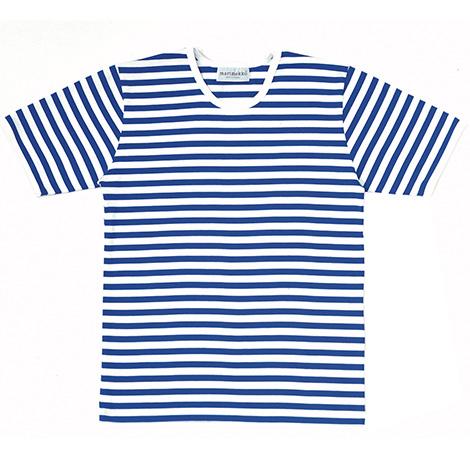
これらのデザインは単なるファッションステートメントではなく、マリメッコのコアバリューである個性、創造性、平等性を反映している。流行に左右されるファッションハウスとは異なり、マリメッコの魅力は、常に自己改革を続けながら、時代を超越した存在であり続ける能力にある。
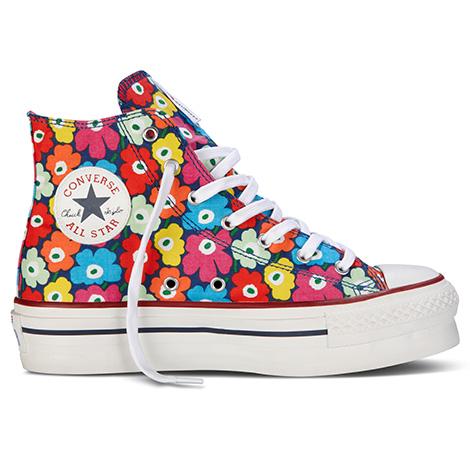
2011年春、コンバース♥マリメッコのスニーカー・コレクション全6型の第1弾が店頭に並ぶ。国際的なブランドとのライセンシング・コラボレーションは、1970年代初頭からマリメッコのビジネスの一部となっている。バナナ・リパブリック、ターゲット、ユニクロ、クリニーク、アディダスなどとのパートナーシップによる限定コレクションは、マリメッコに世界的な知名度をもたらしてきた。
ヘルシンキを拠点とする小さなテキスタイル会社から、国際的に有名なファッション・デザイン・ブランドへと成長したマリメッコの歩みは、先見性のあるリーダーシップ、芸術的コラボレーション、文化的影響力の証である。創業者たち、とりわけアルミ・ラティアは、芸術と日常生活の出会いの場を創り出し、ドレスはキャンバスとなり、柄は自由の声となった。20世紀のモダニズムをルーツとし、持続可能な未来を見据えるマリメッコは、喜びあふれる自己表現と大胆なデザインのシンボルとして、繁栄を続けている。(ソースを見る)
私たちの 版画のビッグフェイム このシリーズは、世界で最も有名なテキスタイルとプリントのパイオニアの遺産を称えるものである。このシリーズでは、彼らのビジネスストーリー、時代を超越したデザイン、そして世界のファッション、インテリア、文化的美学への不朽の影響力について掘り下げていく]。
このシリーズの他の記事
身につけられるアート - ヴェラ・ノイマン、色と柄の不朽のヴィジョナリー
ヴェラ・ノイマン:スカーフを作った女性 a キャンバス・オブ・アート
ミッソーニ:イタリアン・ニットウェアの遺産とその歴史 アイコニック パターン
ミッソーニ・デザインの時代を超越したニットウェアとそのブランドへの影響,Date: 09 Mar 2025,先週のエッセイで紹介したように、ミッソーニは1953年の創業以来、大胆なジグザグ模様、鮮やかな色彩、熟練したテキスタイル職人技で知られる高級ニットウェアの強者である。長年にわたり、このイタリアンブランドは、その特徴的なスタイルを定義するだけでなく、より広いニットウェアの世界にも影響を与えた、いくつかの象徴的なファッションアイテムを生み出してきた。このエッセイでは、ブランドの最も有名なデザイン、人気の高まり、現代のトレンド、ファッション業界の反応、そして今日のファッショントレンドについて探る。,最も象徴的なデザイン,ミッソーニは数十年にわたって数多くのコレクションを発表してきたが、ブランドの真の決定的瞬間として際立っている作品がいくつかある。これらの作品は時代を超越し、一目でそれとわかり、高い人気を誇っている,1.ジグザグニットマキシドレス,最も有名な作品のひとつは、ジグザグ模様のニットマキシドレスである。軽量のかぎ針編みか細編みで作られることが多いこのドレスは、1960年代から1970年代にかけて、ブランドのコレクションの定番となっている。その流れるようなシルエット、アーティスティックな色のブレンド、エフォートレスなエレガンスは、スタイルアイコンやセレブリティの間でマストアイテムとなった。シェブロンカーディガンとポンチョ,シェブロン柄のカーディガンとポンチョは1970年代に絶大な人気を博し、現代のコレクションでも重要なアイテムであり続けている。これらのアイテムには、ブランドのシグネチャーであるマルチカラーのジグザグがあしらわれ、暖かさとファッション性の高さを兼ね備えている。|にできるようにあなたがそれをすることができます本当に出くわすことあなたは、実際には私たち約束、誰でも素早くはちょうど無視これらの一見正確にどのように{}人のことを忘れることができます。ミッソーニのスカーフ,おそらく最も身近で広く認知されているブランドアイテムのひとつが、トレードマークのジグザグモチーフをあしらったニットスカーフだろう。2000年代初頭、ファッション・インフルエンサーやセレブリティがステートメント・アクセサリーとして取り入れたことで、特に人気を博した。このスカーフの人気は、そのラグジュアリーな質感と大胆な色使い、そしてどんな服装も格上げしてくれる楽な着こなしによって続いている。スイムウェアコレクション,ミッソーニのニットやかぎ針編みのスイムウェアは、1990年代から2000年代初頭にかけて大きな注目を集めた。従来のスイムウェアとは異なり、これらのアイテムはブランドの特徴である軽量のニット素材で作られており、スタイリッシュかつユニークなものとなっている。複雑なパターンと透け感のある通気性の良い素材が、アーティスティックでハイファッションな雰囲気を醸し出し、ビーチ好きのセレブリティの間で人気を博した:ミッソーニの最もアイコニックなデザインは、ファッション史のさまざまな瞬間に世界的な名声を得たが、その多くは重要なランウェイショー、セレブリティの推薦、ファッションメディアの認知によるものだった,1960-1970年代:ジグザグニットマキシドレスとシェブロンカーディガンは、ボヘミアンかつジェットセットなライフスタイルの象徴となり、ブランドの革新的なニットウェアを支持した伝説的なヴォーグ編集者、ダイアナ・ヴリーランドのような人々に受け入れられた:ブランドは高級ニットウェア・ハウスとしての名声を確固たるものとし、そのアイテムはエリート・ファッションの人々の間で主流となった。2000年代~現在:アクセサリー、特にスカーフが流行に敏感な消費者の必需品となる。2000年代初頭には、ボーホーシックスタイルが復活し、彼らの軽量ニットウェアはこのトレンドに完璧にフィットした。,さらに、2011年にはターゲットなどの小売店とのコラボレーションにより、ブランドはより幅広い層に紹介され、そのシグネチャー作品はより身近になり、時代を超えたファッションの定番としての地位を強化した:イタリアのファッションブランドは、カラフルなニットウェアの伝統に深く根ざしているが、現代のファッショントレンドに適応し、進化し続けている。今日、ミッソーニを定義するいくつかの重要なトレンドは以下の通り:,1.モダンなミニマリズムとミッソーニのDNAの出会い,最近のコレクションは、よりスマートなシルエット、モノクロームのパレット、よりソフトな色の移り変わりを取り入れ、鮮やかなニットとシグネチャー柄のエッセンスはそのままに、よりミニマルなラグジュアリーの美学に対応している,2024年春夏ファッションショーでのソフトでパステルカラーのマキシドレス,2.ジェンダー・ニュートラルでリラックスしたシルエット,ミッソーニは、今日の快適さ重視の流動的なファッションの好みを反映し、よりルーズでジェンダー・ニュートラルなアイテムを取り入れている。ブランドのニットウェア、ポンチョ、オーバーサイズのセーターは、メンズとレディースの両方のワードローブで垂涎の的となっている,2024年秋冬ファッションショーにおけるジェンダーニュートラルなデザインのサンプル,3.ミッソーニの影響力は、衣料品にとどまらず、ホームウェア、インテリアデザイン、そしてホテルにまで及んでいる。ジグザグ模様の家具、ブランケット、クッションを特徴とするホームコレクションは、ファッションとライフスタイルブランドを融合させ、高級インテリアデザインの定番となっている:提供:ミッソーニ・ホーム2021,4.持続可能性と倫理的ファッション,ファッションにおける環境への影響に対する意識が高まる中、ミッソーニは持続可能なニットウェア技術、環境に優しい糸、責任ある生産方法に注力している。ファッション業界の反応,このブランドは、ファッション業界から高い評価を受け続けている。ニットウェアの職人技とパターンにおける遺産は、ラグジュアリーファッションの中で最も特徴的で不朽のものとみなされている,1.ファッションメディアと業界からの評価,ミッソーニは、ヴォーグ、ハーパース・バザー、エルなどの一流ファッション雑誌の常連である。伝統と現代性のバランスをとるというブランドの能力は、何十年もの間、その関連性を保ち続けている。ファッション批評家はしばしば、ミッソーニのクラフツマンシップへのこだわりと、アイデンティティを失うことなくニットウェアのトレンドを刷新する能力を強調している:2000年代初頭のマストハブデザイナーブランドとしての地位を反映し、登場人物はしばしばミッソーニのアイテムを着用していた:ゴシップガール:この番組の裕福な登場人物は、ミッソーニの特徴的なスカーフ、ドレス、アクセサリーを頻繁に着用し、そのエリートで洗練されたイメージを強化していた、ミッソーニを身にまとったミケランジェロのダヴィデ像を表現した作品「Movimento Classico di dEmo」は、2012年6月にニューヨークの芸術とデザインの中心地、ミート・パッキング・ディストリクトで、11月にはマイアミ国際彫刻公園で展示される。
サドルからシルクへ:エルメスの世界的ラグジュアリーアイコンへの進化
エルメスのスカーフの芸術:簡単な分析 定義 ラグジュアリー
リバティ - 魅惑の歴史とその象徴 生地 プリント
リバティ・パターン - その芸術性と多様性 その タイムレス エレガンス
生地、職人技、製造工程について詳しくお知りになりたい方、またはさらなる協力が必要な方は、メールアドレスまでご連絡ください。 vip@docsunhomeandliving.comまたは下の画像をクリックして公式ウェブサイトをご覧ください。また ドクサン シルク 毎日の服装指導のために。
2024.11-1024x1024.png)
